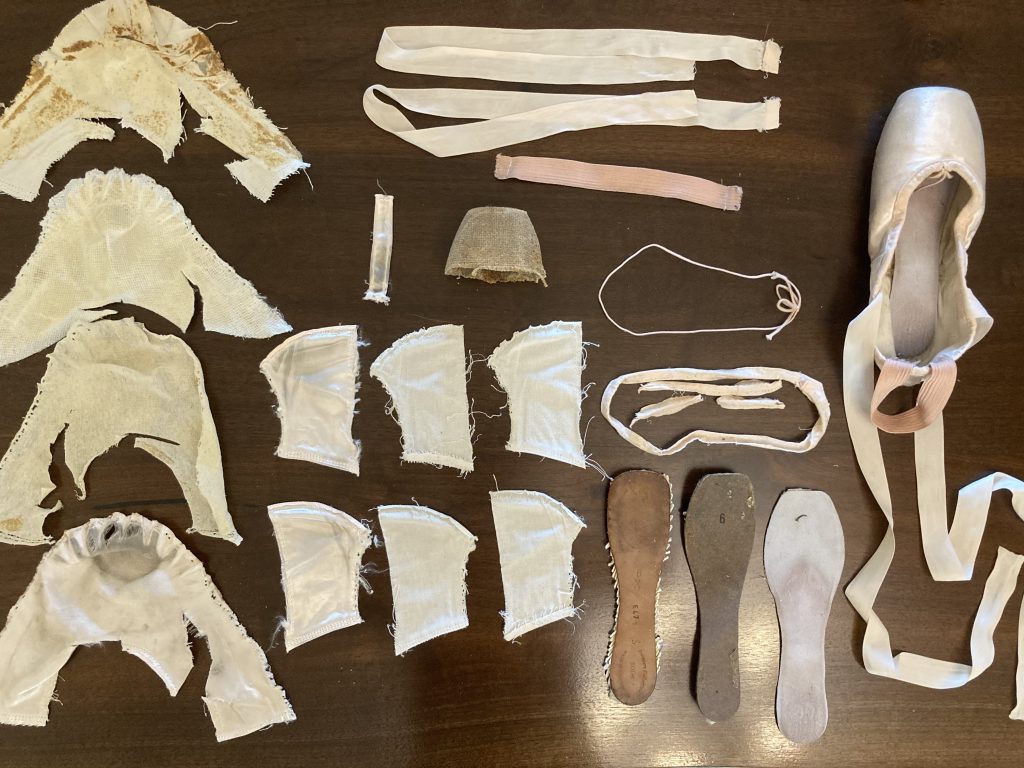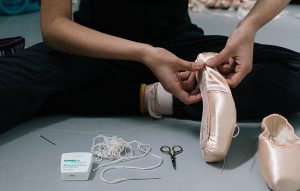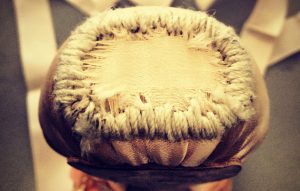The Point of Pointe Shoes
What are pointe shoes?
Pointe shoes are specially made shoes worn by ballerinas to allow them to dance on the tips of their toes.
What are pointe shoes made of?
Pointe shoes look dainty, but they really aren’t. The tip of the shoe is a rigid box made of densely packed layers of fabric, cardboard and/or paper hardened by glue. The dancer depends on it to be extremely sturdy: The entire weight of her body is balanced on a small platform in that box! The rest of the shoe is made of leather, cotton and satin. Each shoe is custom made, and hand crafted to fit each dancer’s unique specifications. No two pairs of pointe shoes are identical!

Why do ballet dancers wear pointe shoes?
Pointe shoes make ballet dancing look magical and even daring. They create an illusion of lightness and give a sense that the ballerina is floating on air.
Do male ballet dancers wear pointe shoes?
Not normally. Sometimes men will wear pointe shoes for comedic effect, such as for the Stepsister characters in Cinderella (men are often cast as the sisters). Male ballet dancers usually wear a leather or canvas slipper with a soft sole, which allows the foot flexibility when jumping.
Can a dancer just put on a pair of pointe shoes and start dancing?
No! Each time a dancer gets a new pair of pointe shoes, she has to break them in. Some methods include:
- darning the platform of the box to provide traction and prevent the satin from fraying
- pounding the box of the shoe with a hammer to soften it
- opening and closing a door on the box
- cutting the satin off the box and using a carpenter’s file to rough up the sole
- lining the inside of the box with floor wax or shellac to mold the shoes and prolong wear
All dancers on their own ribbons and elastic to hold their shoes in place.


How long do pointe shoes last?
Not long — and sometimes for just one performance (or part of a performance!), depending on the difficulty of the ballet. A professional ballerina can dance through 100-120 pairs of pointe shoes in one season. At a cost of about $80 each, PBT spends close to $100,000 on pointe shoes per year.
When can a ballerina start dancing on pointe?
In most cases, somewhere between age 11 and 13. A young dancer must have several years of good dance and strength training to ensure that her feet, ankles and legs are strong enough to handle the stress of dancing on her toes.
When did ballerinas begin dancing with pointe shoes?
Italian ballerina Maria Taglioni was the first ballerina that we know of to dance on pointe in the early 1830s, but the method probably began earlier. Taglioni and her contemporaries stuffed the toes of their soft shoes with starch and other materials, but soon Italian cobblers made harder shoes for them using paper, burlap and satin. This prototype evolved into the modern pointe shoe.
Learn More!
Check out these links for more information on pointe shoes:
- Meet the makers in Freed of London’s behind-the-scenes video on the craft.
- Learn about the anatomy of a pointe shoe from Gaynor Minden.
Try out some basic ballet positions or read a brief history of ballet.
Experience ballet for yourself with classes for all ages, including adult beginning ballet classes. Or, introduce your little ones to ballet with Dance the Story at Home!
Did you Know?
New York City Ballet founder and renowned choreographer George Balanchine said that his fascination with pointe — how it lengthens the dancer’s leg and enhances its beauty — led to his interest in choreography.
